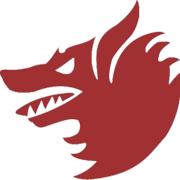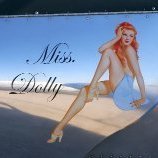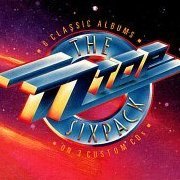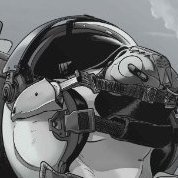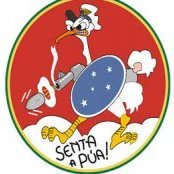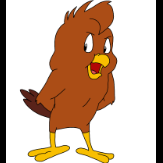Leaderboard
Popular Content
Showing content with the highest reputation on 03/16/2020 in all areas
-
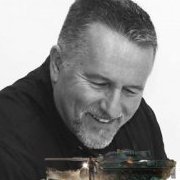
1/32 Trumpeter A7- Corsair
Loach Driver and 12 others reacted to miketippingmodels for a topic
1/32 A7- Corsair finished build complete, I used the verlinden navy carrier tractor, Reedoak’s figures and Eduard MK 84 bombs, along with resin electronics bays and wheel wheels, it’s a pain to build, but over come it and it’s a nice model, painted with MRP paints, this isn’t it’s true base she will join the F-14 Tomcat and F-4 on the carrier deck I built for a collector in London enjoy.13 points -
PZL P.6 1931 from scratch scale 1/32
blackbetty and 9 others reacted to Marcin_Matejko for a topic
Thank you Engine frame: Fuel tank: Propeller: Further work inside the hull: Work continues10 points -
The weathering process started by fading top surfaces with a very light mist of white heavily thinned (actually it is more a layer of thinner with a single drop of white) on a salted model. Salt was applied on the humid model (top surface only) and then left to dry for a couple of hours, then the white misted was sprayed The salt bits should be fine and eventhough they may not be visible when deposited on the water, they will become much visible after the water evaporated Once the paint was dry, the model was cleaned of it's salt with a brush and water. This is very subtle and almost impossible to see on the camouflage, but the overall effect is very convincing, unless it is overdone or the salt bits are too coarse. It is much more visible on the prop, Not surprisingly due to the black base colour. But that's exactly the effect I wanted to get. Then more salt was applied on both top and undersufaces for the next weathering paint layer. This time i'll concentrate on area where a black mist (thinner +a drop of black) is appropriate. Doors, walkways, engine stain areas and undersufaces On the top surfaces, the dark weathering was convincing. I went a bit overboard on the undersurfaces, salt was too coarse and paint layer was too dark. But a quick mist of base colour fixed that issue at later stages. The model was then completely rinced with water to try to eliminate as much salt as possible. The above weathering were done in quick succession to avoid the salt staying too long on the model. Not sure it would have any impact but I'm not quite taking chances with salt Thanks for looking8 points
-
.thumb.jpg.f23b2dc356f90ead35d25aa5e3609a95.jpg)
1/32 Alley Cat Yak-1B Lidiya Litvyak (Лидия Литвяк)
KiwiZac and 6 others reacted to Dart_Schatten for a topic
Hi, friends! Allow me to present model of the Hero woman-pilot Lidiya Litvyak. That was definitely easy built model. I used Akan paints, and Gunze oils. Many thanks for Iva Honkova and her beatiful reproduction! Regards, Sergey Budyansky.7 points -

Bell x-1 - come back build
F`s are my favs and 6 others reacted to Mark M for a topic
well firstly id like to apologize for the lack of wip posts, but ive had a lot on my mind over the last few days so locked myself away in the 'office' and didnt realise how quickly the build was going together, it was never going to be a long build but never the less so all was going at a steady pace then next thing i knew it was done7 points -
Hi Kit should be ready April/May. The kit will cost in the range of 129 -149 EUR so most likely eventually 139 EUR. I will start accepting orders as soon as I have the complete set in my hand (photo etched, decals and all parts). Kit will be available in our online store: www.lukgraph.pl In case of civilian versions if you have your favourite I can help with graphic desing (if I get materials) and even make digital printed decals or masks and send together with kit. Best Lukasz7 points
-
.thumb.jpg.f23b2dc356f90ead35d25aa5e3609a95.jpg)
1/35 Miniart Focke-Wulf Treibflugel
SCRATCH BUILDER and 5 others reacted to Dart_Schatten for a topic
Good day, friends! It's time for something experimental. Model built OOTB. I've used Gunze paints and weathering effects. Regards, Sergey Budyansky6 points -
This one is really good also6 points
-
I wanted to get four cylinders complete and then post. But I think I am going have to leave the modeling for a couple weeks to address a Corona Virus risk, the details of which I will not bore you with. Except to say we have a family member who needs to be quarantined and I and a very old mother in law need to be away from this person for the incubation period at least. In so doing, I will be away from the man cave where my modeling happens. Should be OK - just a near term PITA. Now - work has been humming along on the cylinders. Let me show you. you see a major piece of tooling - a check fixture of sorts that assures exact positioning of each aft cylinder (I have a different one for the front row). And importantly it assures exact positioning of the intake and exhaust stacks coming from the back of the front cylinders. Note the pairs of protruding silver tubes. The white cylinder is not fully prepared (the fourth one I had hoped to finish for you). The other three are complete. More pictures: Included you see the valve guide tubes and tappets and the exhaust and intake stacks. Note how they joggle in towards one another, and squeeze through between the aft row cylinders. The lower pipe will connect to the intake manifold. The upper one will connect to the exhaust manifold. One day you will see these impressive details. Also included are the air deflector jackets that you see attached to the sides of the cylinders. That's all for now. Hopefully you can see how this is being assembled. Much of my time has been spent fabricating these fixtures, and I am not done. Once completed though, I can get repeatability for all the other cylinders coming down the pike. Take care, stay healthy, exercise social distancing, and I will post soon as I can.6 points
-
Danish Gloster Meteor F.4.
Daniel Leduc and 5 others reacted to mpk for a topic
The Meteor now underway.6 points -
PZL P.6 1931 from scratch scale 1/32
Paulpk and 4 others reacted to Marcin_Matejko for a topic
Hello everybody, New project start: I would like to show you the model I am working on in my free time at home. This is a model PZL P.6 from 1931 on my 1/32 "racing" scale. The model is to complement the racing collection that I have been creating for several years, the collection of aircraft from National Air Races racing for the Pulitzer award. These spectacular races took place cyclically before the war in Cleveland, Ohio. Poles and their machines presented themselves twice in these races. The first was Capt. Bolesław Orliński on PZL P.6 aircraft in 1931 and a year later Capt. Jerzy Kossowski on the PZL P.11 aircraft (whose model, also from scratch, I have already made) The PZL P.6 aircraft was a prototype fighter plane developed in 1930 at PZL (PeZetL) of the Polish Aviation Works. The designer of this modern and ground-breaking construction, for those times, was the outstanding engineer Zygmunt Puławski. PZL P.6 was a further development of the PZL P.1 aircraft concept developed by Puławski for a liquid-cooled in-line engine. In P.6, innovative technical solutions were used, such as the "Polish wing" developed by Puławski, a scissor chassis and a very modern and light, half-shell hull structure. The prototype was a demonstration and experimental machine, it had no weaponry. At the end of 1930, the aircraft was presented at the International Aviation Salon in Paris, where it was recognized by the industry press as the most modern fighter aircraft in the world. In this archival film you can see P.6 and Orliński in action (minute 11:47) I derive knowledge about this aircraft mainly from monograph PZL P.7 no. 72 AJ Press publishers, but I also support materials for P.11 and P.24, and what I can get from the Internet. The main drawings are enlarged from 1/48 to 1/32 scale and I build the whole model based on them. The hull for forming the hull was made of MDF board, on which I then formed hot (vacu method) half of the hull: Because there is no commercially available Gnome-Rhone Jupiter VI model in 1/32 scale, so I made it myself: Work on the model is more advanced, so next pictures I will show you soon. Thank you for your attention, best regards Marcin5 points -
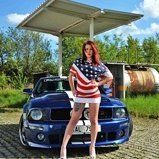
Curtiss P-40E 343.FG, 11.FS, Adak, Alaska
TenSeven and 4 others reacted to Miloslav1956 for a topic
1/32 Hasegawa CMK wheel bay, cockpit Painting mask & decals by Z.Slavík Wheels & instrument panel Eduard All colours Mr.Paint/MRP5 points -
John has found the molds, and has posted on FB that will soon be available.5 points
-
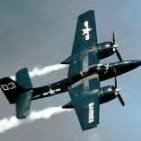
Lukgraph DH 89 Rapide
kalashnikov-47 and 4 others reacted to Out2gtcha for a topic
Classy, classy, classy............... Whos a pretty bird then................5 points -
The seat was from rhe Lynx,i needed to check for scale.4 points
-
I managed to pop it off and sand/polish the blemishes out well enough to suit me. Already glued back on, and the first two colors of paint are on!! Pics later.4 points
-
This seems like a good place to put this pic. I built these from the old Revell N kits and Tamiya decals.4 points
-
Thank Iain. I have now a complete airframe. The moving surfaces are just dry fitted and there is still a few places where I need to putty and sand but were are close to applying some GSB. She is now under primer (alclad Grey microfiller, sanded smooth). It looks like I will be working from home for the next 6 weeks. As I will be saving two hours of commuting every day, I am hoping this will translate in more bench time. We shall see. Everyone stay safe. Cheers, David4 points
-
1:200 USS Missouri Build Log - Trumpeter w/ Pontos Detail Sets
Rick Griewski and 3 others reacted to steinerman for a topic
OK, it's now 11PM and I guess I have time to add the rest of the pictures. So, here they are: Progressing further aft on the starboard side, we see the life rings, the fire hoses, and the compressed air cylinders. There are red fire water nozzles that are glued to the main deck near every fire hose. These have not been added yet. I’ll do that after deck #1 is glued down. The short squat compressed air cylinders are acetylene, the ones with the green top are oxygen, and the ones with the white top at the far left are hydrogen. This is the way the tanks were painted in 1945. This is a little further aft on the starboard side. Note the hoist on the side of the 5” gun platform. The two red valves above the fire hose are identified on the blueprints as steam cutoff valves. Also, the compressed air tanks with the yellow top are dichlorodifluromethane, which is used as a refrigerant. This is a closer view and shows the detail of the front of a 5” gun mount. There are 10 of these on the ship, 5 on each side. Also, if you look very closely at the white fire hose, the nozzles are painted red. A good magnifying glass is a definite necessity when building this ship! This is the aft starboard portion of Deck #1 – and actually part of deck #2 as well. I painted the ventilator intakes black behind the gray grids to make them look more realistic. The grids are actually separate brass pieces. Note that there is another open hatchway here. Now we start down the port side of deck #1, looking at the locker room and also turret #2. Again, the side of this deck is cluttered with all sorts of equipment and hardware. Progressing a little further back, we see 5” gun turrets, a fire hose, a life ring, vent pipes, and more gas cylinders. The ones with the red tops contain propane and/or other fuel gasses. The solid black ones contain just compressed air. I took this next shot to show the detail on the back of the 5” gun turrets. Note the hatches to gain access to the insides of the turret and also the two shell ejection chutes. These little snots were a bugger to make. Took me a couple weeks to make all 10 of these assemblies. Building a model like this as actually building dozens of small models and then putting them all together. Well, more or less! Here we’re looking at the aft end of deck #1 in the port side. Still more hardware mounted on the side. The brown topped cylinders are ethyl chloride and the red valve is another steam cutoff valve. I have no idea what the yellow valve is, the plans don’t tell me. The ventilator grill on this side was painted black behind the grill also. Yeah, the 40mm gun mount looks crooked, I agree. I’ll have to straighten it. Close-up photography is great at pinpointing problem areas! I took this to show that there is stuff mounted on the sides of the 5” gun platforms. Here we have a hose reel, a fire hose, a loudspeaker and a rack with mops. No, these weren’t included in the kit! I had to make them by unraveling string and gluing strands to a plastic rod. Then I had to drill tiny holes in the rack. I have to make two more of them for deck 2, too - UGH! And speaking of deck #2, I set it in place temporarily so you could get an idea of what I’m working on next. I’m building this beast from the bottom up, however a lot of the railings and other really intricate detail won’t go on until the ship is nearly complete. They’re way too fragile. Also, there is quite a bit of detail that mounts on the main deck in front of deck 1 that isn’t in place yet. Things like ladders, winches, fire nozzles, etc. Here’s a closer look at the next deck – and part of deck 3 as well. You can see I have the portholes drilled out and the porthole rings glued in place, as well as the handles on the hatches. There’s a long way yet to go on this sub-assembly. One thing I have to do is to make a few Stokes Litters from scratch to mount on the side of this deck, and I have absolutely no idea how I’m going to do that. But that’s what makes this fun and exciting, right?? We call that “Improvising”! I don’t know if you noticed or not, but several placed throughout these pictures, you’ve seen ladders going up the sides of the deck. These are made using individual rungs, a pair of very sharp pointed tweezers, and a magnifying glass (and a glass of wine, depending on how many of the little buggers I have to glue in!). There are brass PE patterns for every place there is a ladder of this type, and a whole sheet of tiny rungs – which is a good thing, because you lose almost at many as you get glued in! Oh, and you use Elmer’s glue diluted 50/50 with water to glue them in. And, you glue them in by using the tip of a sewing needle. CA glue (super glue) would be a disaster with these. You tape the pattern in place, then VERY CAREFULLY drill 0.3mm (0.0118 inches) holes where the pattern indicates. And incidentally, you buy the drill bits 10 to a pack from Amazon. I’m on my 4th pack. You look cross-eyed at them and they break! This shows the contents of the Pontos detail-up kit for this ship. There are 17 frets of PE, 297 turned brass parts, a deck of real wood, and a bag of assorted miscellaneous parts. The advanced detail set includes 20 Veterans 40mm Bofors kits, solid brass screws, detailed 36” searchlights, and fire valves – and more PE! This shows the turned brass parts that are part of the Pontos detail-up kit. OK, Friends, that's it for tonight. I do have more done than what's shown here, but it'll be a bit before I can post more. I have to set up my tripod, take the photos, then clean them up a bit before I can let you see them. In the meantime, take care, wash your hands, and make damn sure you don't get this crazy virus!4 points -
ED32-125 McDonnell Douglas F-4C Phantom William Tell 1976
Marcel111 and 2 others reacted to Fantasy Printshop for a topic
Euro Decals new sheet of ED32-125 McDonnell Douglas F-4C Phantom William Tell 19763 points -

Cleaning an Iwata HP-C
Dainis and 2 others reacted to chuck540z3 for a topic
I have both the HP-C Plus and CM-C Plus and this is what I do, which is quick (< 5 minutes), effective and I don't ever play with the front nozzle unless I'm doing a full tear down, which is usually after 30-50 spray sessions. 1) Wipe out the cup with a rag, to minimize the amount of paint left in the cup. 2) Fill the cup with hardware store lacquer thinner and spray a bit on a clean rag, then place the airbrush in/on a cleaning station pot. BTW, I used to use the Iwata cleaning station, but found a Chinese made knock-off for half of the price ~ $13.00. Iwata Cleaning Station Pot 3) Pull the needle out the back and wipe it on the rag to clean it. Paint will be stuck to the needle about halfway. 4) Using a small dental brush for flossing, stroke the canal between the cup and the nozzle as the lacquer thinner drips into the cleaning station. The brushes I use have a soft metal wire covered with plastic bristles, that are not harmed by the thinner. Dental Brushes 5) Spray the remainder of the thinner into the pot, which will be cloudy with paint. 6) Fill the cup again with clean thinner, insert the needle back into the airbrush all the way, then stroke it back and forth gently. This will cause paint still in the nozzle and chamber to come loose. 7) Spray a bit more thinner on a rag, then the remainder into the pot. 8) Clean off the outside of the airbrush with the thinner on the rag. Done! - And my airbrushes spray perfectly for many spray sessions before a tear down is necessary. Since the lacquer thinner is toxic, always wear a respirator and rubber gloves. HTH, Chuck3 points -
While pondering how to proceed with my F-16 decals, I did a bit of work on the F-15 intakes. First fill all the depressions and smooth the intakes. Since the older model of engine was fitted in the mid eighties, I cast copies of the Hasegawa F-16 engine and fitted them into the intakes. Once closed not much can be seen but at least I know it is there. And all painted up. Nick3 points
-
I enjoyed this so thought I would share3 points
-

NLLSP- No Longer a Large Scary Project- finished
Phartycr0c and 2 others reacted to Out2gtcha for a topic
Indeed, we have some of the best, most talented and friendliest builders on the planet. Really does humble me!3 points -
Re: Tamiya TS-34, here's the kit: And here's the G.O.A.T.:3 points
-
-screenshot.thumb.jpg.298329c8beec50ab4251aadd92774628.jpg)
NLLSP- No Longer a Large Scary Project- finished
Phartycr0c and 2 others reacted to Sir Sidney Ruff Diamond for a topic
Thanks Mike, glad to be here. Really inspired by the work I've seen on the website/forums, some really talented people out there. I've been out of the game for a while (three decades LOL) so easing myself back in slowly.3 points -
Some images of the figures - have to say I'm very impressed with them: Iain3 points
-
1:200 USS Missouri Build Log - Trumpeter w/ Pontos Detail Sets
blackbetty and 2 others reacted to steinerman for a topic
OK, are we ready for Part 2? I'm not sure if I can get everything posted tonight or not. It's already after 10 PM and I have to upload the photos to Flickr, then get the URL to post here and then do the write-up. See what I go through for you guys! OK, let's get on with it. Once both sides of the deck are detailed (we’ll show more of that later), we turn our attention elsewhere. As you may imagine, a model of this size and this delicate must be screwed down to a base. Up until now, the ship has been mounted on a temporary base that is not nearly as long as the ship. Now, though, we must mount it to a permanent base before we go any further. Once we glue the first superstructure deck to the ship, the opening you see here will be partially covered up and we won’t be able to get to the holes to screw the ship down. So, it’s time to build a base. I chose cherry to make the base out of. I bought two really nice cherry planks from a local guy who planed them down to the proper thickness for me. (Another $50 down the drain!) I cut them to size, then I cut out an opening in the bottom board so it wouldn’t be so heavy ( unfortunately, it still is!). After sanding for a half day, I finished the boards with 5 coats of hand rubbed water based poly, sanding between coats. Not to brag, but they are as smooth as glass. (I was going to say a newborn baby's butt, but since this is a public site, I won't.) Normally big, elaborate ship models are mounted on brass pedestals, but I didn’t want to do this. I wanted something different; I wanted my ship to rest on keel blocks. And even more, I wanted the keel blocks to emulate the layout of keel blocks that were installed in the drydock where the Missouri went for its last refit. Here’s a picture if what the drydock looked like - before it was filled with water, of course! My pattern isn’t exactly the same, but it’s close enough for me. I used walnut for the keel blocks to provide a contrast to the lighter cherry wood. Besides, I had the walnut so it didn’t cost me anything. I used 288 walnut blocks 3/8” x 3/8” x ¼” spaced every ¼” apart. Actually, it was easier to do than it looks. The hardest part was cutting them out. My thumb suffered an injury from the blade of my hobby saw. Told you earlier I was clumsy! At the same time I was cutting out the keel blocks, I found a local acrylic fabricating company that could make me a clear acrylic case for this ship. If any of you are from southwest Michigan, I highly recommend a company called PlexiCase, located here in Grand Rapids. They were competitive, dependable, and did an excellent job. I have a friend on my modelwarship forum who paid over $400 for his case. Mine only cost $235. (Yeah! More $$$$$$) They borrowed the base and made the case to fit exactly over the lip of the bottom board. They did it in only a couple weeks, too. I promised them that when I finished the model, they could put it on display in their showroom for a month or so. They were delighted to hear that. Sure hope I finish it before they go out of business! The case is 60” long, 10” wide, and 15” high. It is make of 3/8” acrylic and the seams are rounded and flame treated for smoothness. The ship is 53” long, which gives 3-1/2” clearance at both bow and stern. I’m having a nameplate engraved for the case, but it’s not finished yet. And yes, the case IS high enough. I may be dumb, but I ain't stupid! This and the next three pictures show the ship resting on the keel blocks. Looks kinda neat, don't you think? I think this looks a lot nicer than if the ship was mounted on a couple pedestals. Another shot of the ship resting on keel blocks. This is a lot more work than using pedestals, but I think it looks a whole lot better. The stern of the ship mounted on the base. I don't know if I told you or not, but the silver colored strips on the prop shafts are zinc anti-corrosion plates. There are some on the rudders also. This is actually automotive striping tape! This is an overall side view shot of the ship mounted on it’s base. A 36” yardstick is placed in front of the model to show the relative size of both the ship and the base. This is one BIG ship!! And please don't ask me where I'm going to put it! The next several pictures show close-ups of the detail on the sides of the first superstructure deck. This, and all successive decks above this, is referred to as the Citadel. It, and the hull immediately below, is the most heavily armored portion of the ship. The angled tubes you see on the outside of the 20mm splinter shield are spare gun barrels for the 20mm guns. Also, note the 9 gun crew helmets located on the outside of the 40mm gun tub. These items were all made out of bits and pieces of plastic. They are not part of any kit. Here we are starting at the front of the starboard side of deck #1. We see a hose reel, fire hose, and life preserver. Note that all the vent pipes are hand made from thin brass rod, with a tiny dab of CA glue at the tip. NOTE: for you landlubbers, Starboard is the right side looking towards the bow. The left side is the Port side. This view shows the detail of one of the 40mm quad Bofors gun mounts as well as the ladders and miscellaneous equipment hanging from the deck sides. I see from this photo that the open hatch is slightly drooped, which has since been corrected. This deck has not been glued down yet, resulting in the visible gap where it joins the hull deck. Note that many of the vent pipes are "kicked out" at the bottom about 4-5 inches. I have a ton of information about this ship and this is an accurate representation. OK, Again, I think I'd better end this part before it gets too long and the moderators do something bad to me. Stay tuned for Part 3, coming up!3 points -

KH T-6/Harvard Kicked Up A Notch: Apr 14/20: Finished!
jimbo and 2 others reacted to chuck540z3 for a topic
March 13/20 Well I don't know what it's like where you live, but here in Calgary the C-Virus hysteria is at a peak. Businesses are closed and we are told to stay home and hide under our beds until further notice. Further, the weather has turned cold again, so what's a guy to do? How about Model?! With every sport shut down, I can't think of a better hobby when you're stuck indoors, can you? First Paint, which is my favorite part of modeling. A first coat of paint will tell you how well you assembled and glued the plastic together, which can sometimes be disappointing. That's why I go to the effort of using a dark wash during assembly, which reveals flaws before they are painted and are easier to fix. Luckily, I found only a couple of new ones, which I have already repaired. Before painting, it was time to glue in the extensive Eduard PE brass rear flaps, which I had left off to avoid damaging the delicate detail within. The fit is excellent, but I still had to sand off some of the brass at the rear to ensure a clean rear edge. If you build this kit, I highly recommend the Eduard "BIG Ed" kit, which has lots of detail missing on the kit parts. I usually use Tamiya Gloss Black lacquer as a first coat rather than a true primer, but for this yellow bird I'm using Gloss White instead (TS-26 Pure White from a rattle can). This should make painting the yellow easier and with less paint. Since it's just an undercoat, I have sprayed it on relatively thin to retain detail, hence the blotchy appearance. One great thing about this model is that both the wheel wells and flaps are painted the same yellow as the rest of the aircraft, which makes painting so much easier. That probably wasn't the original paint scheme, but it is now, which is all that matters. One of the flaws found after paint are the ridges along the rear of the wing, which are due to sink marks around the flap detail underneath. These were totally invisible before, but thankfully easy to sand off and remove. I will let this paint dry for two full days, then lightly sand off crap and other imperfections, followed by 2 coats of yellow, which will be Tamiya TS-34 Camel Yellow, which is the perfect shade of yellow with an orange tinge found on these trainers. The "Camel" it turns out, is the same yellow as found on Camel cigarette packages. Who knew!? Cheers- and wash your hands! Chuck3 points -
As the gent at 3:40 says, "This is what its about.....". Its a fun 7 and a half minutes!2 points
-
Haha, WONDERFUL! That's terrific..............I like it a lot. You see X-1s built but invariably its GG. Such a refreshing change, and so quick! Welcome back to modeling..............2 points
-

FW190D-13 Yellow 10 conversion
Troy Molitor and one other reacted to Out2gtcha for a topic
Thats some good news! Ill take what I can get these days2 points -

KH T-6/Harvard Kicked Up A Notch: Apr 14/20: Finished!
TAG and one other reacted to scvrobeson for a topic
And Lotus was the first time that Camel appeared in Formula 1. They spread around the grid in 1988, but the 87 Lotus was the first appearance of that bright yellow on the track. Matt2 points -
Sure, that's the spirit some more advices: - you won't see the effect until you wash the salt. You will always tempted to do more and that will result in overdone effects. Be moderate, even if you find it is not enough after salt removal do another run, it will be even better. - the white pass is very light and usually gives subtle effect, the black pass is very easily overdone, - Keep the salt fine, Don't use coarse salt. if you grind it, it's even better but make sure you grind it to acceptable fineness, Don't let big chunks of salt on your model covering a too great surface. Apply salt where it matters. over large area I move the grinder on top, on specific areas I usually grind on a piece of paper and apply the salt with a finger pinch - Don't use an hairdryer to remove the water or speed up the drying process, you may remove the salt too Some apply water with a brush, I made a small bottle spray and mist the model from that spraycan Wait till it is totally dry to start painting - paint at very low pressure, put thinner in your airbrush, dip a brush in white paint and mix the cup. One dip is more than enough. No need to fill that cup fully. Same for black, dip once, mix, paint. - toroughly wash your model when the paint is dry (no need to wait a day, 1h seems to be more than enough with acrylics, but it dépends on the paint you use obviously. - if the effect is overdone, no big deal, spray the base colour again to tone it down. Work from inside the panel to the outside. In the process above I heavily overdid the flaps, I painted Inside the ribs and came out with an even better effect to my eyes. The salt applied to the iner flaps was too coarse. The result wasn't satisfactory after the black pass. the combination of too coarse salt and painting a dark mist over a light colour destroyed the subtility I wanted. I had to repaint the flaps in grey. But by misting it overall and painting more Inside the ribs I could salvage the issue and get the effect I wanted. Have fun and post your progress, Oh, and work in a big box, it's a messy process2 points
-
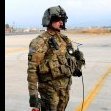
1/35 KH MH-60L "Super 63"
Stalker6recon and one other reacted to Hawkwrench for a topic
I decided to knock out the center console of Super 63. Lots of one eye squinting! Tim2 points -
IBG PZL P11c
Troy Molitor and one other reacted to DrDave for a topic
number generator 1 5 all done final pics tomorrow2 points -
1:200 USS Missouri Build Log - Trumpeter w/ Pontos Detail Sets
Rockie Yarwood and one other reacted to steinerman for a topic
Hi Folks! After going through Ian's thread on his 1/200 Hood, I suddenly realized that it's been forever since I posted an update here. In fact, the last post I made was way back in July of last year. You probably figured I got burned out and quit, right? Well, I haven't, but the progress on my "Monster Mo" has been in fits and starts. When you have both a house and a wife that's an expert at creating "Honey-Do" lists, you find your modeling time becomes low priority. But, little by little I'm making progress and it's probably time to bring you up to date. So, what say we begin, OK? Back when we last left off, I said that my next project was to work on the first deck of the superstructure. Here you see it exactly as it came out of the box, unpainted but with the flash removed. Doesn’t look all that impressive, does it? But – just wait. There's a ton of work to be done on it. I’m going to go into a little more detail than I normally do here to show you the process of how a part gets built up. From here on out, all the sub-assemblies will be handled this same way. The first thing we do is to drill out the portholes with a hand drill. I decided that I wanted a couple of the hatches (doors) opened so I drilled out the opening using my Dremel. Then I added the ladder rungs. Luckily Pontos gives you a drilling template, as you see here. Drilling is done by hand with a 0.3mm drill in a pin vise. The next step is to glue in the porthole rings and the “eyebrows” above the portholes. You can select the portholes as being either open or closed. There is enough brass photo-etch supplied with the detail kit for whatever pattern you choose (providing you don’t screw too many up!) This next photo shows the porthole rings glued in place. As you can see, some are open while others are closed. How you want them is entirely up to you. Also, note that I added are brass hand wheels on some of the hatches. Yeah, I had to buy these extra, too. Dang boat is costing a fortune! All the side detail is removed with an X-acto knife and sandpaper. This includes fire hoses, life preservers, and vent pipes. I’m going to add my own detail since it’s much more realistic than molded on items. Now we’re ready to paint. The sides get a coat of primer and a final coat of Haze Gray acrylic paint. I'm using Model Masters here because I don't like Tamiya's Haze Gray. It's too dark. When dry, this is masked and a coat of Deck Blue is sprayed on the tops of the 5” gun platforms and the deck itself. Next comes the waterways, or “scuppers” as they are called in the Navy. These are strips of brass photo-etch (PE) that have been primed and sprayed Deck Blue. The plastic part has an embossed deck pattern but the Pontos detail kit I have includes an actual wooden deck. It’s extremely thin and very fragile, which for my clumsy fingers is not a good combination. If you take your time and work carefully, things turn out OK. A glass of wine helps, too The wood deck is adhesive backed, but many model ship builders on the ship building forum I belong to have complained that it does not stick down properly and comes up over time. To prevent this, we instead spray the back of the wood deck with a clear matt spray (I used Krylon) and then glue the decking down using artists matt gel medium. An 8 ounce bottle like this costs around $14. Ship building is expensive! But then, I'm guessing so is building large scale aircraft! We kill the adhesive on the back of the decking with Krylon clear spray and then slather on the matt gel, making sure every bit of the surface on both parts is covered. The gel doesn’t dry right away so we can position the deck where we want it. Then we make sure there are no bubbles or air pockets underneath, and using a soft brush and water, we clean all the excess off and set it aside to dry overnight. Now we’re ready to start adding detail to the sides of the deck. I’m using a set of plans for the ship from The Floating Drydock that shows the deck in accurate detail as to what should be placed where. Yep, these plans cost extra too, but they are a little over 9 feet long and worth every penny! Unfortunately though, a lot of the detail shown on these plans are not included in either the ship kit or the two detail kits and must be hand made. Here's an example of what these plans show: Space is limited on a battleship and consequently, every foot of unused space in utilized as storage for equipment of some type or another. Which means, there’s a ton of crap hanging off the sides of the decks. Here I've placed a dime next to this part so you can get a relative idea if the size of small parts I'm dealing with. Now, mind you, this ship model is 53 inches long. That's 4-1/2 feet! A magnifying glass is a must! I'm not exactly sure of how many pictures you can have in a single post, but this is a good place to end this one as there's 14 shots here so far. I've got a total of 45 to post, so I'll break this part here and continue in Part 2. Don't go away!2 points -
Sean, thanks for your Tamiya paint mix. I'm going to mix some up and add it to my list of suggested paints. My understanding is that the red hinomaru was painted directly onto the underlying olive gray paint. Bear in mind that as paint deteriorates an overcoating of one layer will protect the layer beneath, leaving a “shadow” of the first layer as the single layered paint erodes away. Look at A on the image below. The red hinomaru has disappeared but the underlying olive-gray paint, now oxidized to white, has remained protected. But the adjacent unprotected olive-gray paint has largely disappeared, revealing the red primer underneath. Photos B and C shows a similar erosion of the red hinomaru paint, but here the white surround, seemingly brush painted, has largely remained in place. The lines in the wheel well were left unpainted but were also colour coded with bands of paints to indicate their usage. Air lines, such as those leading to the pitot tube, were banded with blue. Oil lines were indicated with yellow and gas lines were colour coded with red. Electrical lines in exposed locations such as the wheel well were enclosed in aluminum tubing or woven aluminum conduits. However, the bare aluminum lines could subsequently be partially over-sprayed with aotake. In the image below it can be seen that from the “top” side the lines are bare aluminum. However, the “bottom” side of the lines have some aotake present. Note too the rubber flex pipe on part of the brake line. The answer probably is that aotake was repeatedly applied during the course of construction. A good example of this is visible on this inner wheel well cover that I also posted earlier. As component parts were added it has been given addition layers of aotake. For the modeler then, any painting of aotake should probably vary in its density and darkness. Ryan2 points
-
Well the GSB option looks nice when its done ..... I was one of the lucky ones to receive the 5W kit before the fire .. And I do miss Paul's wonderful products , but he and his family survived a horror that would have destroyed many other people , they and theeir family were saved , and what's a few modelling products besides that!2 points
-

Trumpeter 1/32 F-8J
Landrotten Highlander and one other reacted to thaipham101 for a topic
I'm a little rushed to button the fuselage up, idk why, maybe because I like seeing the whole thing lol still details to fix and add later on tho \\ I wanted to do a shark mouth scheme but it looks like the F-8J get any of that. Kit decal then, save money to buy couple more 1/72 F-8 since I have the Mig Killer decal, for 16 birds IIRC2 points -
I opened this box with my eyes wide open as to what to expect, what will I fix.....hummmmmm probably only the LERX underside and I'm unsure what to do with the load out But really i have no plan yet, but hey that wont stop me making a start, right!! ........Note to self buy a riveting wheel, the fuselage is a bit bland I have to say the Aries cockpit is beautiful, what a piece of engineering in one little package. So here goes for my first ever Trumpeter kit, of my favorite aircraft1 point
-

Macchi M-5
109 reacted to sandbagger for a topic
Hi all, The fuselage is progressing with the stripes and Latin legend 'Frangar Non Flectar'. Just the three metal hatch covers to add and final weathering and finish, including the fuselage nail lines. Then onto the wings, Mike1 point -
Trumpeter 1:200 HMS Hood + Pontos Detail Set
Iain reacted to steinerman for a topic
Have fun painting them, Iain!1 point -
1:200 USS Missouri Build Log - Trumpeter w/ Pontos Detail Sets
steinerman reacted to dodgem37 for a topic
A labor of love. Great show. Sincerely, Mark1 point -
Is anyone aware of paint masks or decals in 1/32 to do the black Motörhead he111 from the cover of the Bomber album? The Airfix 1/72 kit is tempting but Lemmy deserves a bigger presence in a bigger scale! I don’t have the skills to make my own masks but if someone is wanting to design them I’d jump on board1 point
-
Riveting, not very exciting, but necessary to bring these large slabs of plastic to life. Dan1 point
-

Jo-Han Maverick-Dyno Don's Ride-One Yr Project-Complete!!
mustang1989 reacted to chrish for a topic
Loving the work going into this build! The stance looks perfect, need a low angle 3/4 view with a racetrack background and it won’t be distinguishable from the real deal1 point -
.thumb.png.64af68ce3763f9af8a91e71374ce741e.png)
Revell Me262s - any aftermarket landing gear / cockpits planned?
Reuben L. Hernandez reacted to Ali62 for a topic
Would you guys be happy with a set of brass u/c parts from me? Aerocraft Models. i presume both single and two seater have the same u/c, been wanting to get a 2 seater for a while so I could pick one up to do the parts. Ali1 point -

Trumpeter 1/32 F-8J
Starfighter reacted to thaipham101 for a topic
Been busy since last post with finishing up a couple of my small scale builds also, finally the Aires wheelbay and Eduard interior PE arrived, the Aires set fits like a champ, at least on the main gear bay, one hell of a job sanding the nose one tho and I still haven't removed the moulded kit detail to fit it in yet and, bad news, bought the Eduard PE for the IP but it's way smaller than the Aires IP, so painting the Aires one it is and, after hours of painting, here it is I think I gonna rework the starboard sidewall fabric a little tho, but my eyes are tired now. Also, I should stop buying models so I can buy a decent camera lol1 point

